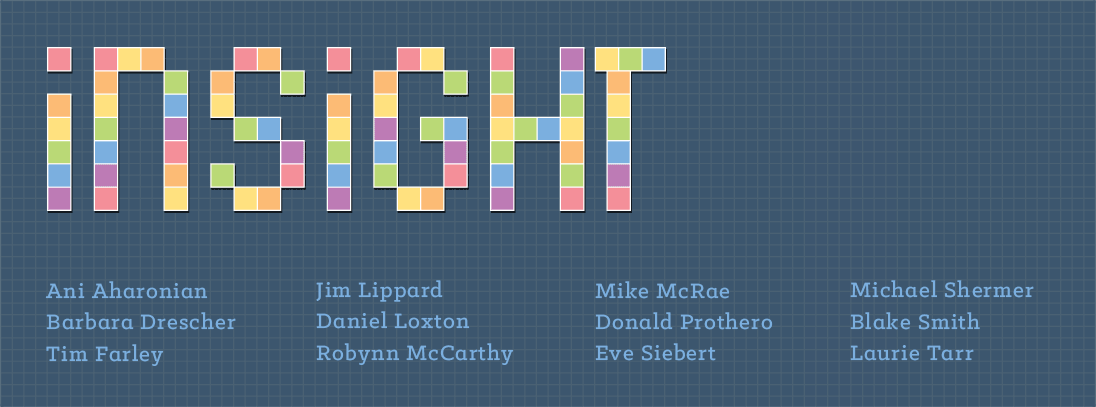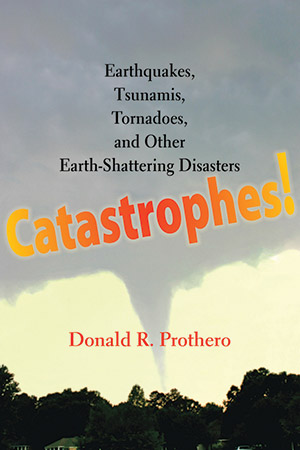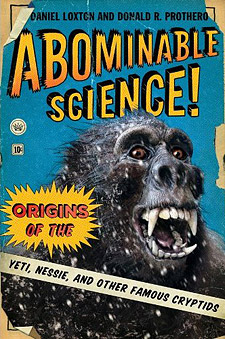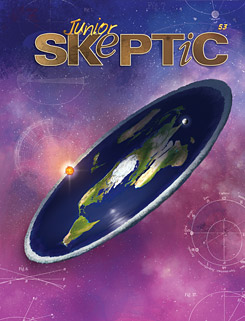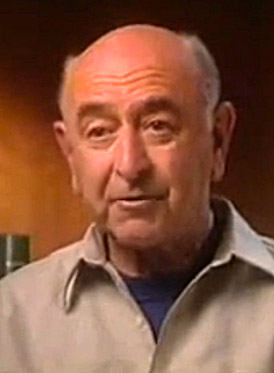
Dr. Wallace Sampson speaking about acupuncture in a television interview. Watch video below.
I’m sad to note the recent passing of a longtime leading critic of alternative medicine, Dr. Wallace Ira Sampson (March 29, 1930–May 25, 2015). Our colleagues at the Skeptical Inquirer reported the news on their Facebook Page on Wednesday, saying, “We were deeply saddened to learn of the death of our friend and CSI Fellow, Wallace (Wally) Sampson, earlier this week.” An obituary has since been published by the San Jose Mercury News. It reports that Dr. Sampson “passed away peacefully on May 25, 2015 at Santa Clara Valley Medical Center”—the very hospital at which he served as Director of Oncology from 1991 to 1997.
Dr. Sampson was a key player in the anti-quackery activist movement which predated, grew up alongside, and (beginning in the mid-1970s) combined to a significant extent with the movement for organized scientific skepticism. (For some details of the California Council Against Health Fraud and other early quack-busting groups, see this short history.) He was the founding Editor of the peer-reviewed journal Scientific Review of Alternative Medicine, a Founding Fellow and board member (emeritus) of Institute for Science in Medicine, a blogger and editor emeritus at Science-Based Medicine, and a founding member of the Bay Area Skeptics. Many of his articles and interviews are available here in a collection of links compiled by the Institute for Science in Medicine.
CONTINUE READING THIS POST…

Daniel Loxton is the Editor of INSIGHT at Skeptic.com and of Junior Skeptic, the 10-page kids’ science section bound within Skeptic magazine. Daniel has been an avid follower of the paranormal literature since childhood, and of the skeptical literature since his youth. He is also an award-winning author. Read Daniel’s full bio or his other posts on this blog.

The spider monkey, a typical platyrrhine. (Image by Lea Maimone, via Wikimedia Commons. “Geoffroy’s Spider Monkey [Ateles geoffroyi].” Used under CC BY-SA 2.5 license.).
Monkeys are such fixtures of the jungles of Central and South America that we think of them as a permanent part of the landscape. But they are not. Only three groups of mammals formed the “Old Guard” that lived in South America since the end of the Age of Dinosaurs: the carnivorous marsupials; the sloths, anteaters, armadillos and their kin; and the native hoofed mammals. Yet monkeys are among the most abundant and conspicuous members of the New World mammals. Today, the New World monkeys (classified as “Platyrrhini” in reference to their flat noses) are incredibly diverse, with 53 species in 5 families, including howler monkeys, spider monkeys, woolly monkeys, tamarins, marmosets, and many more. Where did they come from?
CONTINUE READING THIS POST…
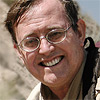
Dr. Donald Prothero taught college geology and paleontology for 35 years, at Caltech, Columbia, and Occidental, Knox, Vassar, Glendale, Mt. San Antonio, and Pierce Colleges. He earned his B.A. in geology and biology (highest honors, Phi Beta Kappa, College Award) from University of California Riverside in 1976, and his M.A. (1978), M.Phil. (1979), and Ph.D. (1982) in geological sciences from Columbia University. He is the author of over 35 books. Read Donald’s full bio or his other posts on this blog.
May. 24, 2015 by
Daniel Loxton |
Comments Off on History and Hyman’s Maxim (Part One)
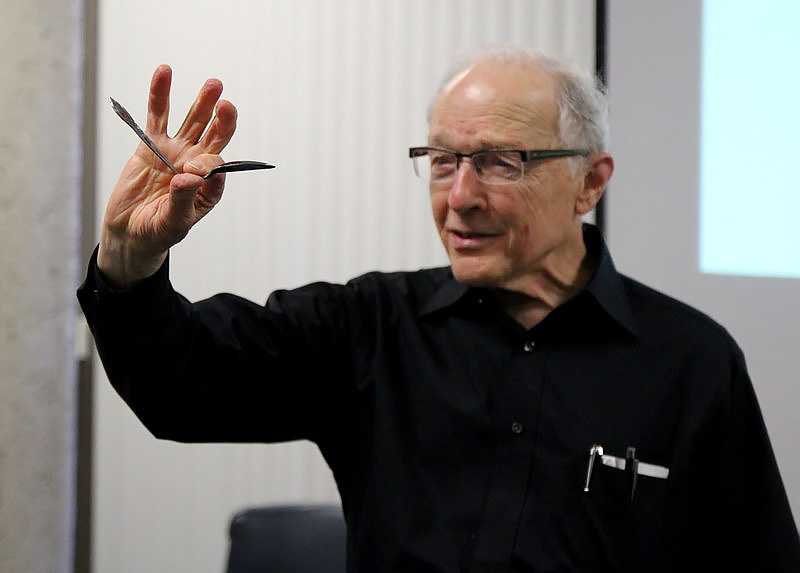
Ray Hyman demonstrates “psychic” spoon bending in 2012. (Image by Susan Gerbic [CC BY-SA 3.0], via Wikimedia Commons.)
In a post last year called “The Forgetfulness of Skepticism,” I discussed one of the difficulties that skeptics face as a result of our small community and very broad subject area:
Generations of skeptics have devoted themselves to understanding paranormal and pseudoscientific claims, beliefs, and impostures. But even with those efforts, the fringe has remained radically under-examinded. Because this realm is so vast while the scholars and activists interested in exploring it are so few, our work has often had something of a scrambling quality. In our rush, skeptics have tended to neglect, or at least to set aside for some future time, some of the improvements of better-established fields.
Many other fields benefit from the attention of historical, theoretical, and philosophical spin-off disciplines. Consider, for example, art history, English literature, medical ethics, or philosophy of science. Skeptics, by contrast, are caught in a kind of perpetual startup culture. With so many urgent triage priorities, the considerable task of recording, maintaining, and passing down legacy knowledge becomes a “nice to have”—a luxury for further down the road. As a result, we tend not to remember very well.
CONTINUE READING THIS POST…

Daniel Loxton is the Editor of INSIGHT at Skeptic.com and of Junior Skeptic, the 10-page kids’ science section bound within Skeptic magazine. Daniel has been an avid follower of the paranormal literature since childhood, and of the skeptical literature since his youth. He is also an award-winning author. Read Daniel’s full bio or his other posts on this blog.

Shakespeare, is that you? Detail from the title page of John Gerard’s Herball
During the past couple of days, media outlets have been running stories claiming that the only authentic portrait of William Shakespeare made during his lifetime has been discovered by botanist and horticulturalist Mark Griffiths. Most of the articles include a quotation from Mark Hedges declaring this to be the “literary discovery of the century.” Is a portrait of a literary figure a literary discovery? I suppose that’s a semantic quibble that doesn’t really matter. Often great literary discoveries are made by scholars who study the relevant literary field, and great discoveries concerning art history are made by art historians. At first glance, a botanist writing about a portrait of Shakespeare would seem to be arguing outside his field of expertise, and Shakespeare tends to attract some peculiar interpretations. But that doesn’t really matter as long as Griffiths provides strong evidence in a peer-reviewed journal like Shakespeare Quarterly, or Shakespeare Survey, or one of several other scholarly journals dedicated to Shakespeare in particular or English literature in general.
Or Country Life, a weekly glossy magazine devoted, according to Wikipedia, to “the pleasures and joys of rural life.” It has featured articles on “Britain’s Best View, The Cream of Counties survey, England’s Favourite Village, Britain’s oldest inhabited dwelling (2003), and Dream Acres imaginary landscape (2009)” (Wikipedia). And, or course, “the literary discovery of the century” (2015). Hmmm. My friend Sharon Hill of Doubtful News often warns her readers about “Science by Press Conference.” That warning can be broadened to include all Scholarship by Media Blitz.
CONTINUE READING THIS POST…

Eve Siebert contributes to the Skepticality podcast and is a panelist on the Virtual Skeptics webcast. She taught college writing and literature for many years. She has a Ph.D. in English literature from Saint Louis University. Her primary area of study is Old and Middle English literature, with secondary concentrations in Old Norse and Shakespeare. Read Eve’s full bio or her other posts on this blog.
This is an excerpt from Junior Skeptic 50 (published in 2014 inside Skeptic magazine Vol. 19, No. 1), which is a ten-page biography of Sagan emphasizing his work in scientific skepticism. A different short excerpt of another section of this story appeared previously in Skepticblog.
Junior Skeptic is written for (older) children, and does not include endnotes, though I often call out important sources in sidebars or the text of the story itself. However, I’ve included some relevant citations here for your interest:
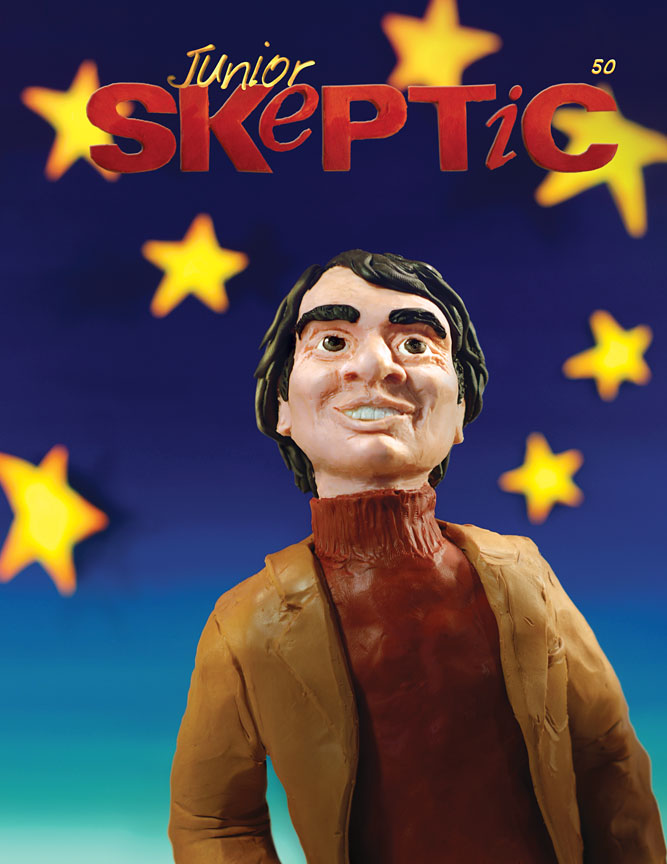
Cover of Junior Skeptic 50, inside Skeptic magazine Vol. 19, No. 1. (Illustration by Daniel Loxton.)
Carl Sagan cared a lot about kooky, far out, pseudoscientific topics. He knew this was quite unusual. He introduced a book section on these fringe science topics by saying, “The attention given to borderline science may seem curious to some readers. … The usual practice of scientists is to ignore them, hoping they will go away.”1 He wished other scientists would care more, and that they were more willing to share their criticisms in public:
I believe that scientists should spend more time in discussing these issues…. There are many cases where the belief system is so absurd that scientists dismiss it instantly but never commit their arguments to print. I believe this is a mistake.2
CONTINUE READING THIS POST…

Daniel Loxton is the Editor of INSIGHT at Skeptic.com and of Junior Skeptic, the 10-page kids’ science section bound within Skeptic magazine. Daniel has been an avid follower of the paranormal literature since childhood, and of the skeptical literature since his youth. He is also an award-winning author. Read Daniel’s full bio or his other posts on this blog.
May. 07, 2015 by
Daniel Loxton |
Comments Off on Celebrating an Unbelievable Decade of Skepticality

Today marks the 10-year anniversary of the first full episode of the very first skeptical podcast, Skepticality—The Official Podcast of Skeptic Magazine (by a nose! The Skeptics’ Guide to the Universe also released their first episode 10 years ago this week—essentially simultaneously). Listen to this one-minute Skepticality teaser, released on April Fools Day. These were the first sounds ever heard in the world of skeptical podcasting. A month later, Derek Colanduno and Robynn “Swoopy” McCarthy released their first full episode, which opened with these simple words: “This is Swoopy, and you’re listening to Skepticality—brought to you on Saturday, May 7th, 2005.”
“Seriously though: Derek, Swoopy…. I owe you guys everything.”
— George Hrab
So small, this birth of skeptical podcasting! And yet, so many things changed at that moment, as Skepticality and the Skeptics’ Guide stepped forward to show what a truly digital, grassroots skepticism could sound like, and what it could become.
Ten years, guys. It’s a helluva thing.
CONTINUE READING THIS POST…

Daniel Loxton is the Editor of INSIGHT at Skeptic.com and of Junior Skeptic, the 10-page kids’ science section bound within Skeptic magazine. Daniel has been an avid follower of the paranormal literature since childhood, and of the skeptical literature since his youth. He is also an award-winning author. Read Daniel’s full bio or his other posts on this blog.
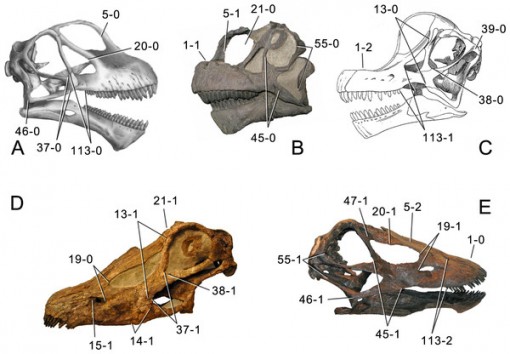
Skulls of different sauropods, showing the distinction between the long-snouted diplodocines,and the short-faced brachiosaurs and camarasaurs. (From Tschopp et al., 2015, Fig. 1)
The past few weeks have been abuzz with the media reaction to a just-published study by Emanuel Tschopp, Octavio Mateus, and Roger B.J. Benson analyzing the diplodocine sauropod dinosaurs and figuring out their classification and relationships. The study itself is a landmark in careful anatomical work, analyzing the problem specimen by specimen (a total of 81 specimens used) rather than generalizing based on previous clusterings of specimens, and looking at far more anatomical evidence than any previous study. Naturally, the press missed the significance of the study completely, and focused on just one minor point: they resurrect the genus “Brontosaurus” for specimens that had been lumped into Apatosaurus since 1903. ALL the publicity, and all the reactions of the non-paleontological reporters and readers was focused on this rather trivial issue, which is not important to real paleontologists in any way (except that we always get asked about it by the general public). Most of the reaction by sauropod paleontologists who were interviewed were generally favorable, but others were more cautious. Almost all agreed that is the most thorough work on the subject written to date, and it will be the foundation on which all future analyses will be built. Similar reactions could be found on the SVPOW (“Sauropod Vertebra Picture of the Week”) website, which is the main forum for discussion by specialists and amateurs about sauropods. (Even better: it was published in an open-access online journal, with access to the peer-reviewers’ comments as well!).
CONTINUE READING THIS POST…

Dr. Donald Prothero taught college geology and paleontology for 35 years, at Caltech, Columbia, and Occidental, Knox, Vassar, Glendale, Mt. San Antonio, and Pierce Colleges. He earned his B.A. in geology and biology (highest honors, Phi Beta Kappa, College Award) from University of California Riverside in 1976, and his M.A. (1978), M.Phil. (1979), and Ph.D. (1982) in geological sciences from Columbia University. He is the author of over 35 books. Read Donald’s full bio or his other posts on this blog.
You can find it reproduced on hundreds of paranormal themed websites and in many ghost books. The photo is usually accompanied by a short bit of text that describes the scenario. Mrs. Mabel Chinnery snapped the photo in March of 1959 in England. She took the photo of her husband in the car, but when the photo was developed she could see that her mother (Mrs. Ellen Hammell) was in the photo sitting behind him—but the photo was taken during a visit to the late Mrs. Hammell’s grave! How could she now appear in the back seat?! [cue dramatic music]

A screen shot from Arthur C. Clarke’s World of Strange Powers offers the clearest copy of the photo by Mrs. Mabel Chinnery allegedly showing a back-seat ghost.
CONTINUE READING THIS POST…

Blake Smith is the producer and host of MonsterTalk, an official podcast of Skeptic magazine. He’s had a lifelong interest in science and the paranormal and enjoys researching the strange and unusual. By day he’s a computer consultant and by night he hunts monsters. He is married and has children. Puns are intentional; don’t bother alerting the management. Read Blake’s other posts on this blog.

Earth, the “pale blue dot”, the tiny green planet in a vast cosmos. It is our only home, and if we foul it, we will never get another chance. (Image created by Reto Stöckli, Nazmi El Saleous, and Marit Jentoft-Nilsen, NASA GSFC; courtesy NASA).
Today is the 45th anniversary of the first Earth Day, held on April 22, 1970. Originally proposed by activist Denis Hayes in 1969, it quickly gained momentum and was officially inaugurated by Wisconsin Senator Gaylord Nelson the following year. Nelson chose the date because it was late enough in the spring that people would be able to hold outdoor rallies and it would not conflict with most campus spring breaks or the Easter and Passover holidays. It also happened to fall on the day after the birthday of famous conservationist John Muir. (Although Nelson didn’t know it, it also fell on the 100th anniversary of the birth of Vladimir Lenin, a fact which the anti-environmentalists used to claim that communism was behind environmentalism). It is now the largest secular holiday in the world, with observances in over 200 countries involving millions of people.
CONTINUE READING THIS POST…

Dr. Donald Prothero taught college geology and paleontology for 35 years, at Caltech, Columbia, and Occidental, Knox, Vassar, Glendale, Mt. San Antonio, and Pierce Colleges. He earned his B.A. in geology and biology (highest honors, Phi Beta Kappa, College Award) from University of California Riverside in 1976, and his M.A. (1978), M.Phil. (1979), and Ph.D. (1982) in geological sciences from Columbia University. He is the author of over 35 books. Read Donald’s full bio or his other posts on this blog.
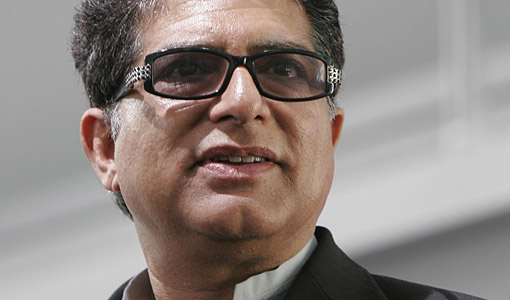
Deepak Chopra in 2006. (Image by Mitchell Aidelbaum, via Wikimedia Commons. Used under Creative Commons Attribution-Share Alike 2.0 Generic license. Cropped.)
In the Middle Ages scholars drew correspondences between the microcosm (the earth) and the macrocosm (the heavens), finding linkages between bodily organs, earthly minerals, and heavenly bodies that made the entire system interlocking and interdependent. Gold corresponds to the Sun, which corresponds to the Heart. Silver corresponds to the Moon, which corresponds to the Brain. Mercury corresponds to the planet Mercury, which corresponds to the Gonads. The four elements of Earth, Water, Air, and Fire were astrologically coupled to the four humor-based personality traits of melancholic, phlegmatic, sanguine, and choleric.
In March of 2010 Sam Harris and I participated in a debate with Deepak Chopra and Jean Houston at Caltech that was filmed by ABC’s Nightline and viewed by millions (video). Deepak hammered out a series of scientistic-sounding arguments for the existence of a nonlocal spooky-action-at-a-distance quantum force that reminded me of a Middle Ages-inspired correspondence between macrocosm world events and microcosm quantum effects, well captured in the following chart (inspired by my friend and colleague Stephen Beckner):
CONTINUE READING THIS POST…

Dr. Michael Shermer is the Publisher of Skeptic magazine, a monthly columnist for Scientific American, an Adjunct Professor at Claremont Graduate University and Chapman University, and the author of The Believing Brain, Why People Believe Weird Things, Why Darwin Matters, The Mind of the Market, How We Believe, and The Science of Good and Evil. His new book is The Moral Arc: How Science and Reason Lead Humanity Toward Truth, Justice, and Freedom. Read Michael’s other posts on this blog.
In my role as the Editor of Junior Skeptic (and now INSIGHT) I quite often receive email from media, researchers, and general readers about topics I’ve covered. My schedule does not always allow me to respond in the depth I’d like, but I try to be helpful as often as I can—in keeping with the Skeptics Society‘s mission to inform the public. Today I’d like to share a pleasant exchange with an Abominable Science! reader named Karl, who wrote to ask me the following:
I have been listening to a lot of podcasts dealing with Bigfoot and Dogman and the eyewitness accounts can be compelling. Apparently, these two creatures have been seen all over the U.S. and indeed the world. There is a substantial database of accounts by now.
My question:
Do the skeptics believe that ALL of those accounts are attributable to hoaxing or mistaken identity? And if not, what are these people actually seeing?
It seems unlikely to me that ALL of these seemingly sober and earnest people, whose accounts can be vividly detailed, are either lying or mistaken in what they saw and experienced.
Here is my lightly edited reply:
CONTINUE READING THIS POST…

Daniel Loxton is the Editor of INSIGHT at Skeptic.com and of Junior Skeptic, the 10-page kids’ science section bound within Skeptic magazine. Daniel has been an avid follower of the paranormal literature since childhood, and of the skeptical literature since his youth. He is also an award-winning author. Read Daniel’s full bio or his other posts on this blog.
The year 1815 was an important one in history. On January 8, the Battle of New Orleans ended the War of 1812—even though it was fought AFTER the treaty ending the war had already been signed in 1814. (Communications across the Atlantic were very slow in those days.) In February, Napoleon Bonaparte escaped from exile on the isle of Elba, raised another huge French army, took control of France, and ruled for 100 days. Then he was defeated at the Battle of Waterloo on June 18, and ended up in his final place of exile on the remote Atlantic island of Saint Helena, where he passed the remainder of his days. Soon the French throne returned to the royal family with the rule of Louis XVIII. Less known at the time was the publication of the first geologic map by the humble canal engineer, William Smith, which has been called “the map that changed the world.”
April 10 was also the 200th anniversary of a momentous event in geology, and in human affairs: the eruption of Mount Tambora. It is the largest volcanic eruption in recorded human history, much bigger than the enormous eruption of Mt. Krakatau in 1883, or the much smaller eruptions of Mt. Saint Helens in 1980 or Mt. Vesuvius in 71 A.D. Mt. Tambora is on the island of Sumbawa, in the Indonesian Archipelago, east of Java. Indonesia is home to hundreds of active volcanoes. (Krakatau is west of Java, in the Sunda Strait between Java and Sumatra). There was an even larger eruption of Mt. Toba in northern Sumatra 71,000 years ago, which nearly wiped out humans on this planet, but there are no historical records of this ancient event.
CONTINUE READING THIS POST…

Dr. Donald Prothero taught college geology and paleontology for 35 years, at Caltech, Columbia, and Occidental, Knox, Vassar, Glendale, Mt. San Antonio, and Pierce Colleges. He earned his B.A. in geology and biology (highest honors, Phi Beta Kappa, College Award) from University of California Riverside in 1976, and his M.A. (1978), M.Phil. (1979), and Ph.D. (1982) in geological sciences from Columbia University. He is the author of over 35 books. Read Donald’s full bio or his other posts on this blog.
The legend of the Loch Ness monster is one of the most popular and enduring of all the tall tales of cryptozoology—and ironically, one of the most easily debunked as well. In our book Abominable Science!, Daniel Loxton and I laid the entire myth to rest about as conclusively as one can debunk something. Yet it still manages to drum up publicity on a regular basis, routinely appearing in news items that demonstrate how bad ideas just won’t die—and how journalists manage to keep paranormal and pseudoscientific ideas going, rather than doing their jobs as reporters, checking facts, and viewing their sources critically.
One recent news item can be listed as a classic “Journalism 101 FAIL.” A regional paper called The Scotsman ran an article claiming to have found the fossil of Nessie’s “great granny.” It is full of head-slapping howlers that make any geologist or paleontologist cringe at the ignorance of the reporter who ran the story. Loch Ness monster enthusiast Gary Campbell is featured (as he has often appeared in other silly Nessie stories from supposedly reputable news organizations), along with Dr. Evelyn Gray and archeologist Cait McCullagh, a curator at the Inverness Museum and Art Gallery. Following Campbell’s lead, The Scotsman makes a big fuss about a Devonian fossil fish called Pterichthyodes milleri, from the Old Red Sandstone in the area, collected by the pioneering fossil collector Hugh Miller back in the 1830s and resting in the collection of the Inverness Museum. Apparently ignorant of every aspect of paleontology and geology, Campbell and the gullible reporter claim this fish is an ancestor to “Nessie,” offering “evidence that she exists and that her relatives populated the Highlands in prehistoric times.” Instead of using the fossil animal’s proper name, they’ve nicknamed it “Pessie.”
CONTINUE READING THIS POST…

Dr. Donald Prothero taught college geology and paleontology for 35 years, at Caltech, Columbia, and Occidental, Knox, Vassar, Glendale, Mt. San Antonio, and Pierce Colleges. He earned his B.A. in geology and biology (highest honors, Phi Beta Kappa, College Award) from University of California Riverside in 1976, and his M.A. (1978), M.Phil. (1979), and Ph.D. (1982) in geological sciences from Columbia University. He is the author of over 35 books. Read Donald’s full bio or his other posts on this blog.
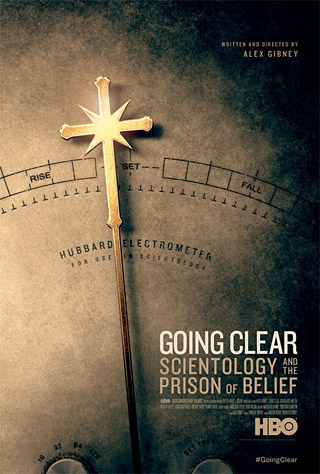
Promotional poster for Going Clear (2015), from HBO Documentary Films
“You don’t get rich writing science fiction. If you want to get rich, start a religion.”
—attributed to L. Ron Hubbard
On March 29, HBO aired its highly anticipated documentary, Going Clear: Scientology and the Prison of Belief. (US readers may view a trailer here.) The television premiere received huge media attention, provoking an escalation of the Church of Scientology’s already gigantic PR counter-attack. Having previously taken out full-page advertisements against the film in the New York Times and other papers, Scientology took the battle online using paid promotional tweets and (as discussed by INSIGHT’s Tim Farley) targeted Google ads. This ferocious media storm is a sure sign that they view the film as a threat to their world (and their fears are justified). Ironically, their ham-fisted onslaught on Twitter and other media just gave the film more publicity, and made more people want to see it. Someone in the Church should look up the “Streisand effect”!
CONTINUE READING THIS POST…

Dr. Donald Prothero taught college geology and paleontology for 35 years, at Caltech, Columbia, and Occidental, Knox, Vassar, Glendale, Mt. San Antonio, and Pierce Colleges. He earned his B.A. in geology and biology (highest honors, Phi Beta Kappa, College Award) from University of California Riverside in 1976, and his M.A. (1978), M.Phil. (1979), and Ph.D. (1982) in geological sciences from Columbia University. He is the author of over 35 books. Read Donald’s full bio or his other posts on this blog.
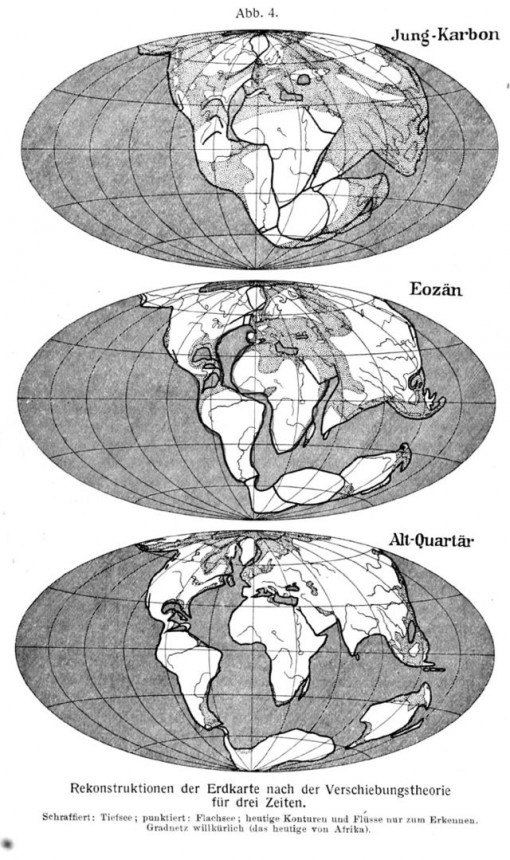
Alfred Wegener’s 1915 reconstruction of the drifting of the continents from a supercontinent of Pangea to today. (Courtesy Wikimedia Commons).
Every year of the 20th century included many scientific breakthroughs and achievements, but few years were as important as the year 1915—one hundred years ago this year. It seems odd that it stands out as such a watershed. World War I had broken out the previous August with the rapid German advance through the Low Countries and northern France and almost to Paris, then been beaten back by an Allied counteroffensive. By the beginning of 1915 the Allied and Axis lines across Belgium and northern France were deeply entrenched, and they would barely budge for three more long years of pointless slaughter. Yet despite these horrific events, science marched on. In physics, Einstein published his theory of general relativity, which gave us the concepts of space-time and warped space. His theory also successfully explained the peculiarities in the apparent motions of Mercury. (However, the paper was not widely read for a while because of wartime restrictions on circulating scientific publications). Ada Hitchins established the first radioactive decay series, showing that radium was a decay product of uranium. Pluto was photographed for the first time, although not yet recognized as a planet. Thomas Hunt Morgan demonstrated non-inherited genetic mutations in fruit flies, undermining the foundation of eugenics. The Nobel Prize in Physics went to the Braggs for their development of X-ray crystallography, which became important not only in geology but also was the key to unlocking the structure of the DNA molecule and many other scientific discoveries.
CONTINUE READING THIS POST…

Dr. Donald Prothero taught college geology and paleontology for 35 years, at Caltech, Columbia, and Occidental, Knox, Vassar, Glendale, Mt. San Antonio, and Pierce Colleges. He earned his B.A. in geology and biology (highest honors, Phi Beta Kappa, College Award) from University of California Riverside in 1976, and his M.A. (1978), M.Phil. (1979), and Ph.D. (1982) in geological sciences from Columbia University. He is the author of over 35 books. Read Donald’s full bio or his other posts on this blog.
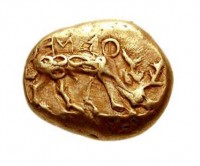
Coins entered the world of ancient Greece by the 6th century BCE, shortly followed by the first material philosophers. (Image by Classical Numismatic Group, Inc., via Wikimedia Commons, used under Creative Commons Attribution-Share Alike 3.0 Unported license.)
Precisely when the guttural croaks and screeching hoots of ancient humans became words is a mystery. We do know language can be measured in hundreds of thousands, if not millions of years—that is, humans have been physiologically capable of sharing observations about their surroundings for a long time. For most of history, the stories we shared have described a universe that is personal, emotional, and whimsical.
Then, about two and a half thousand years ago, something different happened. On the coast of modern day Turkey in a city called Miletus, a man named Thales wondered what everything in nature was made of. His answer was almost mundane: water.
It’s unlikely Thales of Miletus was the first to consider this question, nor the first to suggest an answer. Since none of his writings have survived the ages we are forced to rely on writers like Aristotle and Herodotus to speculate on the thoughts of this so-called ‘first philosopher’. But Thales represented the emergence of a way of thinking new in human history, where the universe emerges from a single system of impersonal qualities.
CONTINUE READING THIS POST…

Mike McRae is an Australian science writer and teacher. He has worked for the CSIRO’s education group and developed resources for the Australian government, promoting critical thinking and science education through educational publications. His 2011 book Tribal Science: Brains, Beliefs and Bad Ideas explored humanity’s development to think scientifically—and pseudoscientifically—about the universe. Read Mike’s other posts on this blog.
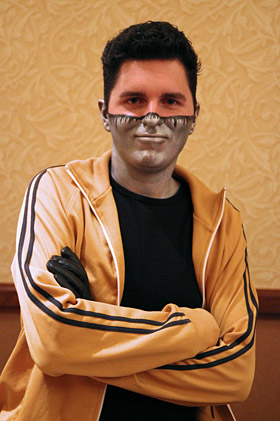
“Captain Disillusion,” who is sometimes known by his alter ego Alan Melikdjanian. (Image by Susan Gerbic, via Wikimedia Commons. Used under Creative Commons Attribution-Share Alike 3.0 Unported license. Colors adjusted for INSIGHT.)
YouTube’s champion of video justice, Captain Disillusion (@CDisillusion on Twitter), has a new piece out this week (see below) deconstructing this compelling viral “Rush Hour” video created by filmmaker Fernando Livschitz.
As an independent skeptical activist, Captain Disillusion has long used his YouTube channel and filmmaking know-how to debunk one bit of viral video chicanery after another—from hostile penguins to preternaturally skilled ping pong to Haitian UFOs (a case I discussed myself in eSkeptic).
When the Captain took up his quirky persona and pixel-fighting mission way back in the storied yesteryear of 2007, it was already possible for artists to create seamlessly photorealistic visual effects scenes on an ordinary home computer, quickly and easily, using only a few hundred bucks worth of software. Since then, the veil of illusion has only gotten deeper and the pace of malarkey more frantic. Never have we needed our champion more!
CONTINUE READING THIS POST…

Daniel Loxton is the Editor of INSIGHT at Skeptic.com and of Junior Skeptic, the 10-page kids’ science section bound within Skeptic magazine. Daniel has been an avid follower of the paranormal literature since childhood, and of the skeptical literature since his youth. He is also an award-winning author. Read Daniel’s full bio or his other posts on this blog.
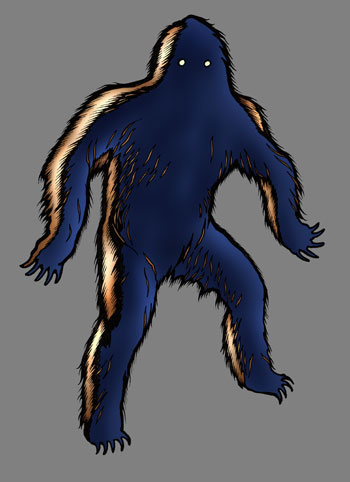
Illustration by Daniel Loxton. Originally published in Junior Skeptic 16, bound inside Skeptic Vol. 10, No. 2 (2003).
When Oxford geneticist Dr. Bryan Sykes decided to tackle the topic of Bigfoot, the cryptozoology community got very excited. Would he identify some new unknown primate? Would the study legitimize research into cryptozoology? Would his evidence give more reason to doubt Yeti and Bigfoot’s existence?
Sykes’ paper Genetic Analysis of Hair Samples Attributed to Yeti, Bigfoot and Other Anomalous Primates appeared in the Proceedings of the Royal Society in August, 2014. (Sykes’ co-authors were Rhettman A. Mullis, Christophe Hagenmuller, Terry W. Melton, and Michel Sartori.) It was the first legitimate large scale DNA survey of anomalous primate1 evidence. (If you’d like to understand why the discredited Melba Ketchum paper doesn’t qualify, I would commend to you the work of Sharon Hill who has compiled a set of well reasoned responses to the various Ketchum claims.) Sykes paper was released in conjunction with a multi-episode documentary called Bigfoot Files, produced by Channel 4.
Prominent folks in the Bigfoot community dismissed Sykes’ effort. Matt Moneymaker of the Bigfoot Field Research Organization (BFRO), famous for Finding Bigfoot, the animal planet “documentary series” which has failed to live up to its title in its six seasons of engrossing forest adventure role-playing, was especially harsh in his criticism of Sykes’ efforts. Moneymaker writes:
CONTINUE READING THIS POST…

Blake Smith is the producer and host of MonsterTalk, an official podcast of Skeptic magazine. He’s had a lifelong interest in science and the paranormal and enjoys researching the strange and unusual. By day he’s a computer consultant and by night he hunts monsters. He is married and has children. Puns are intentional; don’t bother alerting the management. Read Blake’s other posts on this blog.

In the past few weeks, there has been a tremendous furor over the disclosure of the ethics of a noted climate denier, Wei-Hock “Willie” Soon. He has been one of the “stars” of the climate denial lobby, spending most of his time speaking to right-wing media and denialist groups, and being promoted by prominent denialist politicians like Sen. James Inhofe (R-OK). Even though the problems with his research, and with his funding, were public knowledge for many years, it made news because of recent discoveries revealed by the New York Times of just how much money he was paid for his work. His situation is even more problematic because he failed to report this funding in his publications and signed “conflict of interest” statements that he then violated. Naturally, the denialist institutes and right-wing media have fought back and defended their man, and Soon himself made a statement (brilliantly dissected by Greg Laden) to the press in his own defense. But the facts of the case seems incontrovertible, no matter what you might think of the climate change debate, and it appears that serious consequences will be forthcoming.
CONTINUE READING THIS POST…

Dr. Donald Prothero taught college geology and paleontology for 35 years, at Caltech, Columbia, and Occidental, Knox, Vassar, Glendale, Mt. San Antonio, and Pierce Colleges. He earned his B.A. in geology and biology (highest honors, Phi Beta Kappa, College Award) from University of California Riverside in 1976, and his M.A. (1978), M.Phil. (1979), and Ph.D. (1982) in geological sciences from Columbia University. He is the author of over 35 books. Read Donald’s full bio or his other posts on this blog.
In recent months I’ve been hard at work on a three-part series of Junior Skeptic articles exploring fringe theories regarding the shape of the Earth. The issue on newsstands now considers the peculiar history of claims that our world is as flat as a pancake. Our upcoming issue considers the (surprisingly) much more reputable history of hollow-Earth thinking through to the end of the 19th century. To complete the series, I am working now on an issue about 20th century hollow-Earth beliefs with their frankly creepy intersections with conspiracy theories, flying saucers, Nazis, and madness. (Subscribe to Skeptic here.)
These stories about radically distorted Earths are a lot of fun to research, and to tell, because of the tension between the preposterousness of these ideas and the sincerity, slipperiness and passion of the arguments used to support them. To look inside such beliefs is to visit alien worlds. And when on such strange journeys, there are few things more intriguing than trail-markers which tell us people we recognize have, like Arne Saknussemm, passed this way before.
I adore the 10-page Junior Skeptic format, but the limited space and young audience do often force me to leave wonderful tangential material on the cutting room floor. One of the most painful of those cuts from the story of the Flat Earth? Once upon a time, this topic was tackled by the author of Animal Farm and Nineteen Eighty-Four.
CONTINUE READING THIS POST…

Daniel Loxton is the Editor of INSIGHT at Skeptic.com and of Junior Skeptic, the 10-page kids’ science section bound within Skeptic magazine. Daniel has been an avid follower of the paranormal literature since childhood, and of the skeptical literature since his youth. He is also an award-winning author. Read Daniel’s full bio or his other posts on this blog.
← PREVIOUS
NEXT →


